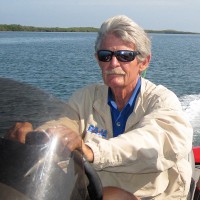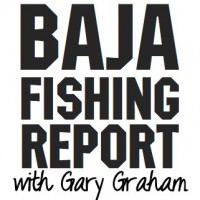
As winter settles in along the West Coast, anglers need to practice the “duck and cover” method of fishing: watch the local weather forecast before planning any last-minute trips.
The Coronado Islands and flats and along the shore near the Tijuana Bull Ring usually shake off the winter storms and become fishable in a matter of a few days.
Chances of yellowtail, bonito, or calico in the kelp are always a possibility – but they are not a given.
Bottom fishing, regardless of whether drifting the flats or fishing the rock pile, usually can help fill the coolers.
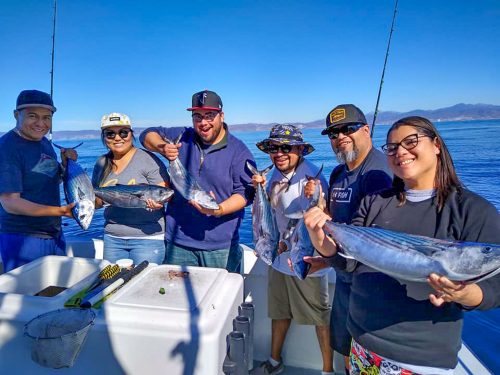
When the weather settles, Ensenada also snaps back quickly with nice-sized bonito being a local favorite along with lingcod and sheepshead down deeper.
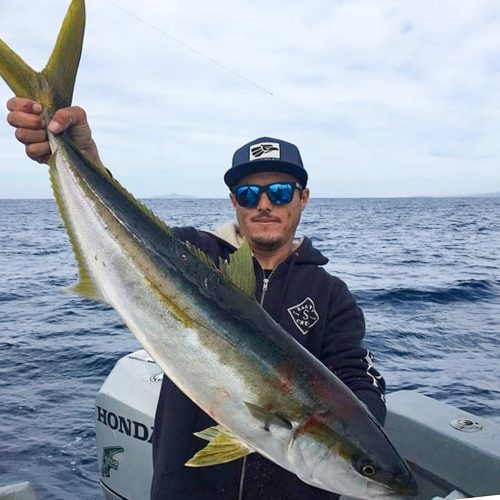
San Quintín seems to be the exception; locals continue to score on both yellowtail and calico between storms before resorting to targeting the deeper fish.
Down the Pacific Coast along the Vizcaíno Peninsula, anglers consider this time of year the tail end of their best season.
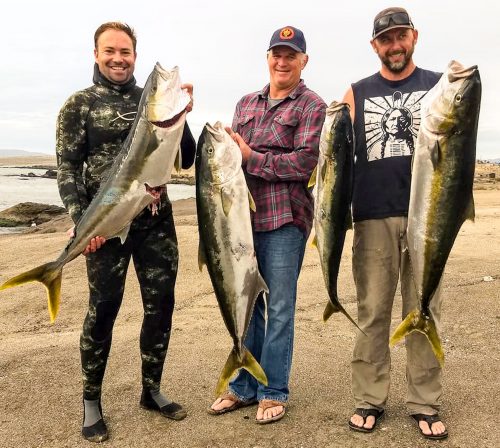
At Bahía Asunción, visitors who fish rod and reel have scored some trophy-sized yellows on artificials and bait, though others prefer to suit up in wet suits and shoot-em-up.
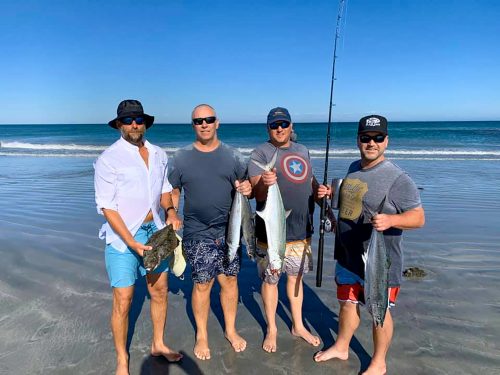
Down farther at Punta Abreojos, “The Black Bass Lodge” reported that fishing along the shore, guests caught plenty of sierra which was quickly prepared into a fresh ceviche.
Magdalena Bay is experiencing a longer offshore season than average.
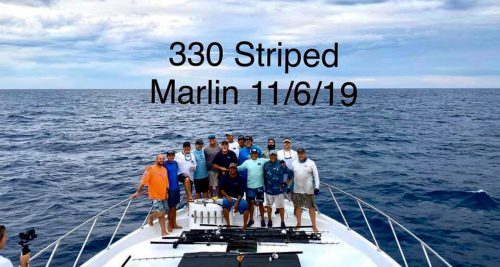
There has been a new catch-and-release record set by two boats in the “Bad Company” – a 144-foot mother ship and the 92-foot fishing boat. The team of 14 anglers, plus their support crews and two captains caught and released 330 billfish in a single day and 900+ for the three days of fishing.
Meanwhile, the remainder of the fleet added wahoo, tuna, and dorado to the count. While in the bay, snook, corvina, and pargo were biting lures and live shrimp or sardines.
On the Sea of Cortez, the seasonal north winds have arrived, forcing locals and visitors alike to choose their days carefully and to be prepared to shorten their fishing day when the wind line makes it to the shoreline.
Bahía de Los Ángeles locals and visiting anglers are having some luck for yellowtail and even more success with grouper, pargo, snapper, and a variety of other rockfish.
The few reports from Gonzaga Bay and Santa Rosalía reflect similar conditions with very few fishing.
Loreto’s action has slowed, though there has been good fishing happening off the tip of Carmen Island from “Lobo” out to the spot known as the “50.” There are a string of boulders in a busy current area that can hold some wild action with yellowtail weighing between 18 and 25 pounds. Grouper that were caught in the same spots using the same techniques have also hit the fillet tables.
Live mackerel, circle hooks on long leaders, and enough weight to deal with the current, are the traditional tickets. Iron has also nailed a few yellowtail with the old standby “blue and white” doing most of the damage. Snapper, pinto, and triggerfish are in most catches. Nothing is wide open, but it’s a good start for the upcoming season.
There aren’t many anglers as windy and stormy weather comes and goes. The kite boarders and windsurfers are enjoying the weather, but it’s not great for fishing.
Las Arenas/Muertos Bay, which is at least a little more protected from the northern winds, provides the best fishing this time of year.
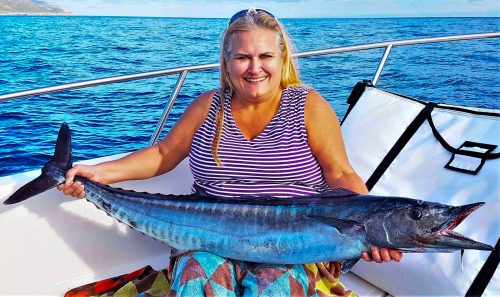
The few who went out found some excellent wahoo fishing by Cerralvo Island with 20- to 40-pound fish willing to hit dark-colored Rapalas and Yo-Zuri Magnums. Multiple hook-ups were common. The same area produced hefty tuna bites in the 50-to 100-pound range, although most were lost because they would only bite light line, resulting in some long, drawn-out battles that often favored the fish and beat up the angler!
When anglers couldn’t get to the island, they concentrated inshore for dorado, cabrilla, snapper, bonito, and jack crevalle.
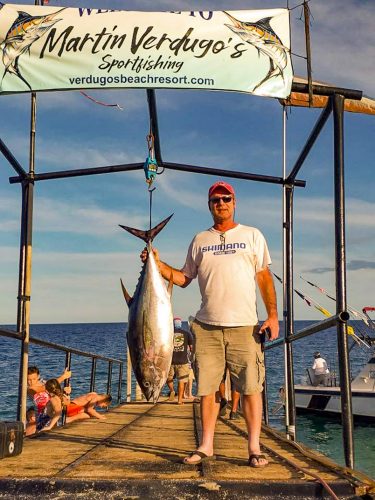
At East Cape, the north winds are a factor with few boats in the water. Pangas are finding tuna and a few small dorado offshore, while tin boats focus closer to shore and are rewarded with a few small roosterfish and decent sierra action.
The Puerto Los Cabos area banks – Gordo Banks, Iman, San Luis, and some as far as Vinorama – offered a few nice wahoo up to 47-pounds; other strikes were lost, which seemed to indicate they may hang around until Christmas. Dorado were spread out in all directions, but were found more consistently towards Cabo San Lucas; most were under 15-pounds, with few exceptions of 20 pounders, striking both bait and lures.
Some larger yellowfin tuna were hooked off the Gordo Banks; more anglers had battles with various species of sharks, however. There have been some monster tuna on these same grounds with several very impressive catches, including 145-, 272-, and 335-pound records.
This has proven to be the best week yet on these grounds for the larger grade of yellowfin. Several other cow-sized tuna were lost after long, epic battles. Slow-trolling lovely smaller-sized skipjack was the most successful tactic. Offshore and towards Cabos San Lucas there was a football-sized grade of yellowfin tuna, though that was a bit hit or miss, with some boats landing five to seven fish and others lucky if they found any.
At Cabo San Lucas, the billfish, primarily double-digit stripers, are being caught and released a few miles off Cabo Falso with a few smaller-sized blues and blacks in the mix.
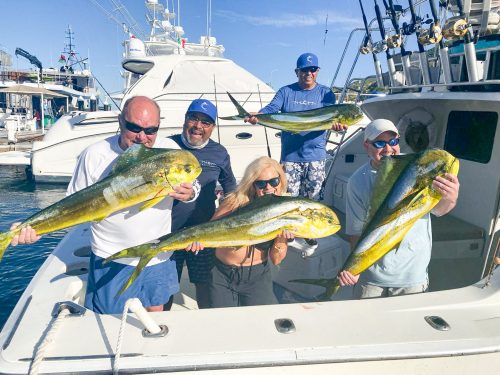
There were also some larger yellowfin being caught traveling with the porpoise. Closer to shore, there are smaller dorado with a few keepers, plus nice-sized roosterfish and jack crevalle in the mix.
Gary Graham, That Baja Guy
thatbajaguy@gmail.com
Questions and comments are always welcome.
With more than five decades of fishing experience – from light tackle and fly to offshore billfish – Gary Graham has experienced all aspects of fishing in the Southern California and Baja waters. His observations of species behavior, tackle and techniques are always from his unique perspective, earning him the respect of his peers as well as anglers who eagerly follow his Baja reports and features.
Gary maintained a home at East Cape in Baja Sur for more than 18 years and still spends nearly half of each year exploring the entire peninsula in his self-contained Roadtrek van. He observes everything Baja, from the mysteries of a tide pool on a deserted Baja beach filled with tiny sea creatures to the largest billfish in the sea.

